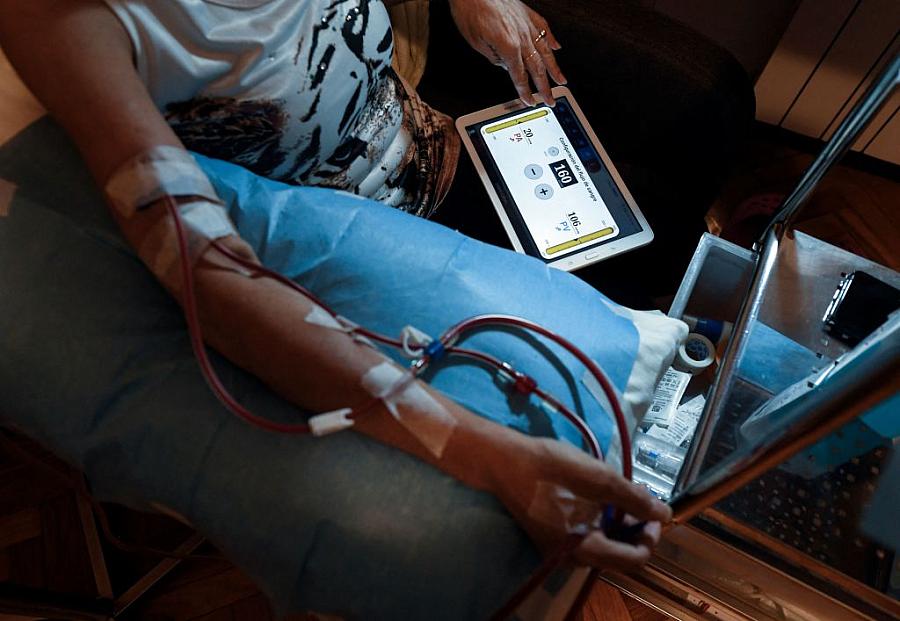Let these tips inform your reporting on health disparities among Pacific Islanders

(Photo by Oscar del Pozo/AFP via Getty Images)
Like many good stories, this one started with a tip. I had heard about a Micronesian patient on dialysis who needed a kidney transplant. A team of health professionals had come together to prepare the patient’s application for a transplant, a significant task given the myriad requirements to receive the coveted organ.
But after the application was submitted, it was rejected — and a major reason was because the patient didn’t have a main caregiver designated during the recovery process. Instead, as is common among Pacific Islander families, the whole family took turns driving the patient to appointments, helping them with medication and any other needs.
The patient’s physician later told me she felt frustrated that this cultural value of family and communal help was seen as a deficit, rather than a strength. The patient never received the transplant.
When I embarked on my Center for Health Journalism project this year as a 2022 Impact Fund grantee, I knew I wanted to explore systemic challenges to accessing health care for Native Hawaiians and other Pacific Islanders. The community has long suffered from high rates of diabetes and kidney disease, disparities that helped drive up their COVID-19 infection and death rates. The community’s high rates for noncommunicable diseases are well documented. But what’s lesser known is what challenges exist that might limit their access to care.
Through my reporting, I spoke with Native Hawaiian patients on Oahu’s North Shore who endure long rides along thin coastal roads to and from dialysis; neighbor island residents who fly to Oahu for dialysis training not available at home; and Chamorro patients who don’t have dialysis in their home islands at all, and must move islands to access dialysis, or die.
One frequent challenge in covering Pacific Islanders is the lack of data about the community, even in a place like Hawaii where Native Hawaiians make up a significant part of the population.
Still, I encourage reporters embarking on coverage of this community to see this lack of data as a challenge to be overcome, or a story in itself, rather than as a reason to shy away from this topic. When covering end-stage renal disease and transplants in particular, I was pleasantly surprised to discover national data sources that do in fact disaggregate Pacific Islanders:
-
The United Network for Organ Sharing tracks kidney transplants nationally. While unfortunately there isn’t data on residents of U.S. Pacific territories, where there are no transplant centers, the national data can be parsed to look specifically at transplant outcomes for people who identify as Pacific Islander, which includes Native Hawaiians and other Polynesian, Micronesian and Melanesian communities.
-
Another useful tool is the United States Renal Data System, which tracks data on end-stage renal disease nationally. While data on Pacific Islanders isn’t available for every query, some useful data can be found within annual report reference tables.
-
For both organizations, I would recommend reaching out to the researchers who work there, whom I found very helpful in ensuring that I was interpreting the data accurately.
-
I was also pleasantly surprised by how much scholarship had been conducted on this topic, and would also recommend reaching out to national researchers if you’re reporting on this.
Another challenge besides data was finding patients who were interested in telling their stories. With the help of the Center for Health Journalism engagement grant, I tried different strategies: traditional reporting, online surveys, online and in-person listening sessions.
I found the listening sessions were extremely helpful in attracting interested patients and providers who cared about sharing their points of view. The off-the-record nature of the events allowed people to feel comfortable sharing their private medical information. The group setting enabled people to build on each other’s points and helped me pick out patterns and trends.
I learned a lot and was able to follow up with sources whose stories I wanted to share publicly and later conduct on-the-record interviews. Because I already had an overview of patients’ health care challenges, I was able to dive deeper in subsequent interviews and use our time more effectively. Plus, we had already established a degree of trust and understanding in the previous group meeting.
For anyone who is interested in conducting listening sessions to get to know patients, here are a few tips:
-
Bring food if the event is in-person. Depending on what community you’re covering, there might be other culturally appropriate ways of gathering, but when it came to meeting with Chamorro patients, providing traditional food helped break the ice.
-
Bigger isn’t always better. The size of my listening sessions ranged from just a couple of patients to a dozen attendees to about 16 participants. The latter lasted an hour and a half, and if we’d had a larger group, I don’t think we would’ve had time to listen to everyone.
-
Ask for help when you need it. I was lucky to have help from my Center for Health Journalism engagement mentor, Maya Miller, and from my Civil Beat colleagues Kuʻu Kauanoe and Alana Eagle, who were more familiar with the ins and outs of event organizing than me. I also asked people in the community what they’d recommend if they were holding a similar event.
Pacific Islander communities often don’t receive a lot of media coverage but like other Indigenous groups and communities of color, they face a plethora of systemic health care challenges. This is a subject with a lot of potential for meaningful reporting and it’s one I hope to continue pursuing. I hope these suggestions help other reporters do the same.
